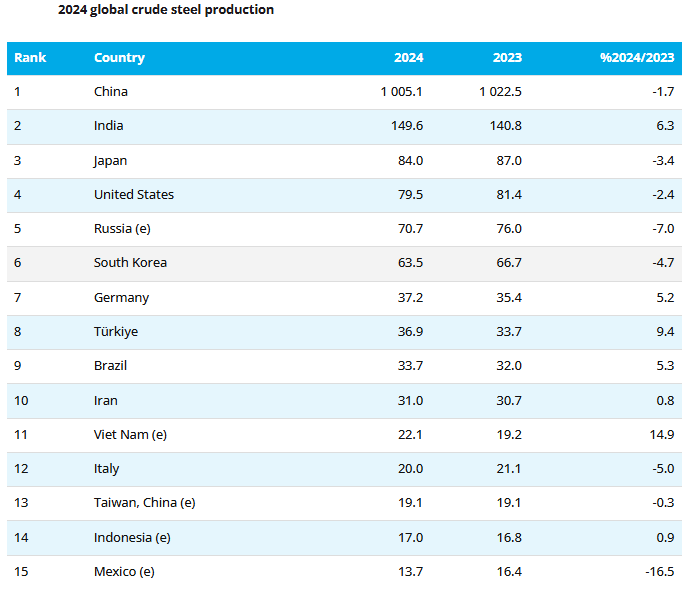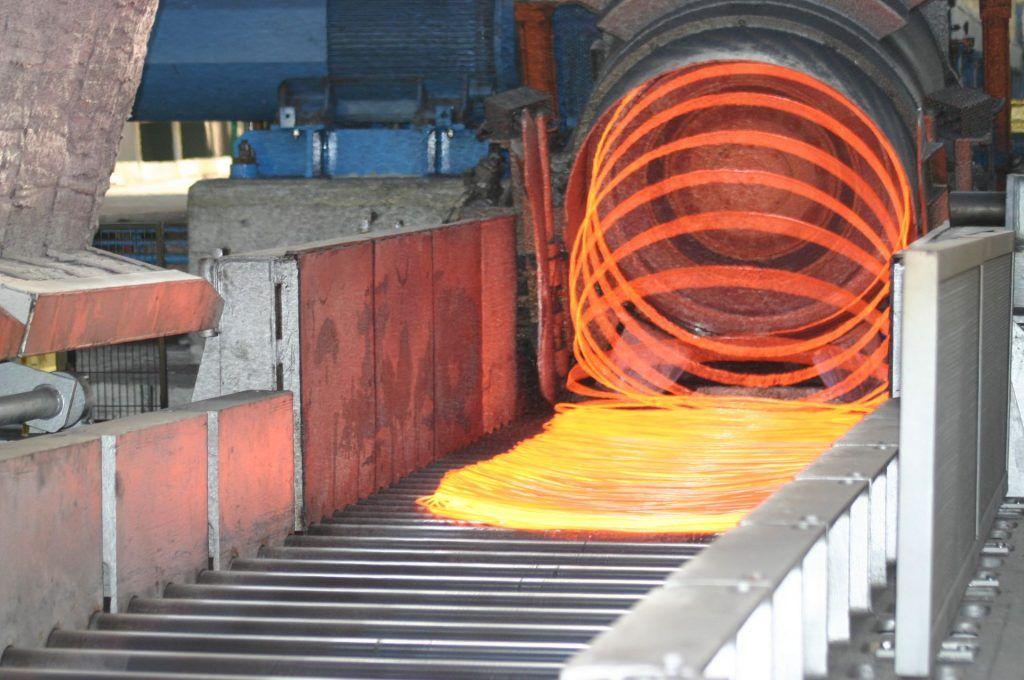China, India and Japan occupied the top positions among the world’s leading steel producers in 2024, according to data from the World Steel Association (Worldsteel).
Globally, steel production totaled 1.883 billion metric tons, implying a 0.8% drop compared to 2023.
World steel producers
Among the major producing countries, steel production in China, Japan, the United States and Russia decreased, while production in India, Germany, Turkey and Brazil increased.
The five largest steel producers account for about 74% of world steel production in 2024.

Steel is manufactured mainly by two methods: the basic oxygen furnace (BOF) and the electric arc furnace (EAF). In the EAF process, an electric current melts steel scrap to produce new steel. In contrast, the BOF process uses coke and iron ore to generate pig iron, which is then transformed into steel. Metallurgical coal plays an essential role in BOF, as it enables the production of coke.
Globally, according to Arch Resources, about 72 % of the world’s steel is made using the BOF method, while in the United States this process accounts for about 31 % of production.
In 2024, China produced 1,005.1 million tons of steel in 2024, followed by India (149.6 million), Japan (84.0 million) and the United States (79.5 million).
Tariffs in the United States
Several Presidential Proclamations, issued under Section 232 of the Trade Expansion Act of 1962, provide for a 25% tariff on certain steel imports into the United States.
However, there are exceptions. First, Argentina, Brazil and South Korea are subject to restrictive quotas. In addition, imports from the European Union, cast and poured in the EU, are exempted within the tariff quota limits until December 2025. The same applies to Japan, the United Kingdom and Mexico, provided that the steel is melted and poured in their respective territories or, in the case of Mexico, in North America.
On the other hand, imports from Canada and Australia do not face this tariff. Finally, Ukrainian steel is exempted if it is smelted and poured in Ukraine or the EU, but only until June 1, 2025.
All of these exemptions will be lost, however, if a recent executive order by U.S. President Donald Trump imposing a 25% across-the-board tariff on steel imports to the United States goes into effect.
In addition Trump plans to announce more on his plans to impose “reciprocal” tariffs on steel and aluminum trade this Thursday.

